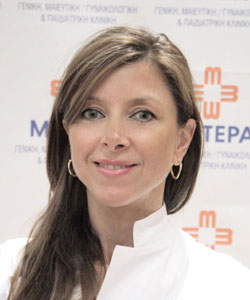PRP It has been used for over 20 years in numerous surgical fields to enhance bone grafting, accelerate wound healing and reduce the risk of infection after surgery. Tennis elbow, plantar fasciitis, Achilles tendonitis, rotator cuff tears, osteoarthritis and chronic low back and neck pain are all being treated with the injection of PRP with the goal of regenerating degenerated connective tissue. Now PRP has also entered the domain of aesthetic dermatology.
This autologous method uses your own blood to produce “Platelet Rich Plasma” (PRP), which is enriched with platelets, lymphocytes and growth factors. When the PRP is reintroduced into your body (via injection) it accelerates the normal healing process by stimulating collagen formation and repair. This process brings long lasting tissue rejuvenation without side effects. PRP has been widely used for many years in plastic surgery, orthopedics, dentistry, and for both soft tissue implants and wound healing.
The treatment is fast and easy to perform. The dermatologist will draw between 10 and 20 millilitters of blood into a special glass vacuum tube that is included in the kit. This is a standard office procedure which causes no more discomfort than providing a sample for blood work. Following the blood draw, the clinician will centrifuge the tube in order to separate the blood into several fractions, thereby creating the PRP. The concentrated blood cell portion, known as PRP, is then injected beneath the skin in the area of fat loss and/or wrinkles. PRP can provide a gradual increase in skin thickness and vitality. Results usually become apparent within 15 days of treatment.
Typically, the majority of patients see their treatment results last up to 1-1 and 1/2 years. Subsequent “touch ups” may be needed to maintain the desired effect.
What is great about is that it is not just pushes your own production of collagen, stimulating regeneration to eliminate wrinkles, thus ‘delaying’ the ageing process, but it is also safe, as the plasma is taken from the patient’s own blood. It is so safe that can be even used under the eyes. In addition, as the plasma is derived from the patient’s own blood, it is also non toxic and thus cannot be rejected by the body. It is actually re-absorbed (by the body) in a just a few days. PRP is an ideal treatment for those who wish to have great results with no side effects, taking advantage of a safe minimally invasive procedure.
 The following is written by Dr Penelope Tympanidis. Dr Penelope Tympanidis is a consultant dermatologist and the owner of the Dermaperfect clinic on Harley Street. Recognised by the European Board of Dermatology, she is one of London’s leading dermatologists and has been a pioneer in minimally invasive anti-ageing techniques for the last 13 years, having been featured in Tatler magazine, The Telegraph, Vogue, the Financial Times weekend supplement as well as the Channel 4 programme, Make Me Perfect. Dr Tympanidis trained at Tufts, Boston and UCL and has worked as a consultant in dermatology at Mayday University Hospital, London, as a clinical research registrar at the Department of Dermatology at UCL and the Royal Free/UCL Medical School Campus. She has gained first-hand experience in general dermatology, photo-dermatology, allergy and patch testing, paediatric dermatology, skin cancer clinics, laser treatment sessions, and teaching students and GPs. She now trains junior plastic surgeons on minimally invasive cosmetic procedures, and junior dermatologists on cutaneous surgery.
The following is written by Dr Penelope Tympanidis. Dr Penelope Tympanidis is a consultant dermatologist and the owner of the Dermaperfect clinic on Harley Street. Recognised by the European Board of Dermatology, she is one of London’s leading dermatologists and has been a pioneer in minimally invasive anti-ageing techniques for the last 13 years, having been featured in Tatler magazine, The Telegraph, Vogue, the Financial Times weekend supplement as well as the Channel 4 programme, Make Me Perfect. Dr Tympanidis trained at Tufts, Boston and UCL and has worked as a consultant in dermatology at Mayday University Hospital, London, as a clinical research registrar at the Department of Dermatology at UCL and the Royal Free/UCL Medical School Campus. She has gained first-hand experience in general dermatology, photo-dermatology, allergy and patch testing, paediatric dermatology, skin cancer clinics, laser treatment sessions, and teaching students and GPs. She now trains junior plastic surgeons on minimally invasive cosmetic procedures, and junior dermatologists on cutaneous surgery.

